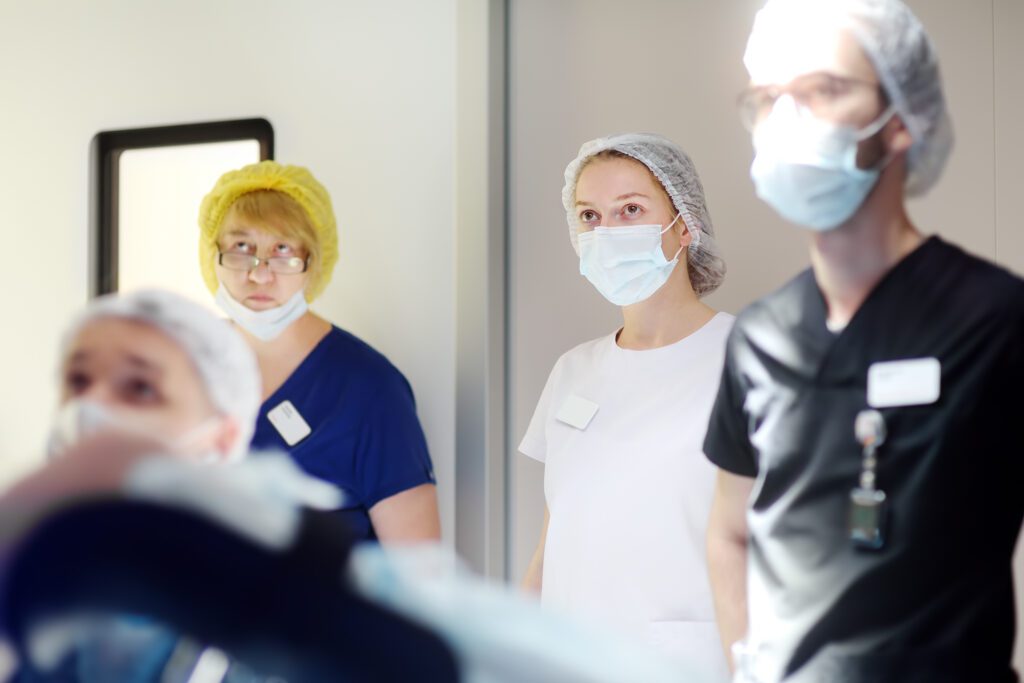How I Balanced My Clinical Rotations with Shelf Exam Studying
- by
- Oct 05, 2023
- Reviewed by: Amy Rontal, MD

During my third year of medical school, the first half of my general surgery clerkship was spent on the hepatobiliary and transplant surgery service.
One day, as we were completing the running subcuticular stitch on skin after a Whipple procedure, the fellow looked up at me and asked, “Are you interested in going on a liver procurement tonight?” I responded with a resounding affirmation.
Of course, the procurement meant I wouldn’t be doing any Qbank questions that night. But in retrospect, it was a small sacrifice considering the ensuing experience became one of the reasons I fell in love with surgery and decided to pursue a career in it.
In the end, this decision didn’t impact my performance on the shelf exam because I had a solid study plan. The moral of the story is, while finding a balance during third year can be difficult, it can be done! And I hope over the course of this article, my experiences and perspective can aid you in excelling on your shelf exams while also putting your best foot forward on the wards.
Let’s begin with a brief reminder of why shelf exams matter, and why finding the right balance between your rotations and preparing for them is a huge part of what third year is all about.
Why Shelf Exam Prep Matters
So, why are shelf exams so important, and why do you need to spend time preparing for them during third year? Well, many medical schools incorporate your shelf exam score into calculations for your final grade on the clerkship, which could be the difference between honors, high pass, and pass. For those with a pass/fail grading system during clinical rotations, shelf exams are still important as they can be predictive of Step 2 scores, which are all the more important in a pass/fail Step 1 world.
Shelf Exam Prep and Wards: Feel the Synergy!
Your shelf exams are a big deal, but the best way to approach third year is to view performance on the wards and preparation for shelf exams as synergistic, not as competing interests.
For example, my first day of third year was on internal medicine and we had a patient with altered mental status get admitted at 5:30 pm. It was up to me if I wanted to stay or go home. After deciding to write the H&P for the patient, the differential diagnosis for altered mental status has been ingrained in my mind ever since—in a way I don’t think a textbook or question bank could have taught me.
This wasn’t the exception to the rule. During my third year, I often found that learning from an actual patient was far more impactful than anything I could read in a book. Acclimating to this style of learning as opposed to the traditional classroom lectures of preclinical years is one of the most important things that happens during wards. In fact, some of the greatest clinical pearls I gathered over the years were quick tidbits passed during rounds or while at the patient’s bedside. This kind of learning isn’t something that stands in the way of traditional shelf exam prep, it’s actually a great way to complement it.
Some Great Shelf Exam Study Materials
So, imagine you’re coming home from a rewarding day at the hospital and you’re asking yourself “what should I study?” I found that using a few resources to their fullest potential set me up for the most success.
For every one of my rotations, I completed all the relevant Qbank questions and Anking cards. I also supplemented this by watching Dr. High Yield, Emma Holliday, and OnlineMedEd videos (they were free when I was a 3rd year).
However, this was what worked for me and it is likely that a different combination of resources may be most effective for you. I have friends who despised Anki and learned best by listening to Divine Intervention during their commute and reading books like Case Files and StepUp. Some of my classmates opted to only complete a portion of the Qbank questions for each clerkship.
Obviously, there’s a lot of ways to study for a shelf exam. It may take a few rotations to find the resources that you like the most and settle into your studying groove. It certainly did for me. Don’t fret—be ok with switching things up if a certain routine is not working for you.
 Put your knowledge to the test with this FREE shelf exam practice quiz of the most commonly missed shelf questions from the Rosh Review Shelf Exam Qbanks (one for each specialty)! How many questions can you get?
Put your knowledge to the test with this FREE shelf exam practice quiz of the most commonly missed shelf questions from the Rosh Review Shelf Exam Qbanks (one for each specialty)! How many questions can you get?
Creating a Shelf Exam Study Schedule
Another big aspect of studying for shelf exams while on rotations is creating a study schedule that works for you. For example, while some of my colleagues preferred to start their Qbank questions towards the second half of rotation, I am a big fan of doing a few reps everyday leading up to race day.
All my rotations were six weeks in length, with the shelf exam towards the end of the final week. At the beginning of the rotation, I would divide the Qbank questions over the first 5 weeks and leave the final stretch for NBME practice exams and review. I liked this strategy because it divided shelf studying into daily bite-sized amounts that were doable for me. Most days, I had to do 20-30 Qbank questions at home which was manageable. If I ever stayed extra late at the hospital and couldn’t do the day’s questions, I would distribute them over other days.
Studying During Rotations
Additionally, keep in mind that during rotations, you don’t need to wait until you get home to start studying. In my case, I often had downtime when I was done pre-rounding, or even sometimes after lunch. I would use this time to knock out some Anki cards on my phone. Then, when I got home, I just finished what was left.
This approach worked really well for me, but a different approach might be best for you. Also, if the team doesn’t need any help from you, it’s ok to ask if you can use the time to study. They may even do a quick chalk talk on a challenging topic for you! This way, when I got home, I often completed my Anki cards or just had a small portion left.
Again, this method worked very well for me, but a different approach might be best for you. Some of my colleagues would prefer to start their Qbank questions towards the second half of the rotation. There’s a lot of ways to create your study schedule, just make sure you tailor it to your needs. Also, be sure to schedule some catch up and break days into your study plan, as life does not stop during clerkship year.
If you need some help setting up a schedule, I recommend checking out Blueprint’s FREE Med School Study Planner which automatically schedules your shelf exam studying for you throughout your rotation!
Shelf Exam Prep When You’re Tired After a day at the Hospital
Now let’s go over a common situation. You have come home from a long day at the hospital and are completely drained. The last thing you want to do is type your Qbank URL into your search bar or fire up Anki. You could try to do more passive studying and watch a video or listen to a podcast while cooking dinner. If that’s still too taxing, then take the night off and focus on your wellbeing. The third year of medical school is like a marathon, so it’s best to take the time to refuel and check in with your support system.
Further Reading
I extend my heartfelt congratulations on entering this exciting period of your medical school journey and I am rooting for you. Remember, third year is about finding a shelf exam prep and rotations balance that works. If you’re having trouble striking this balance, or are interested in medical school tutoring, please contact the Blueprint team. I’d be more than happy to schedule a session with you!
Looking for more (free!) shelf exam and clinical rotation tips from Blueprint tutors? Find more on the Med School blog:
About the Author









